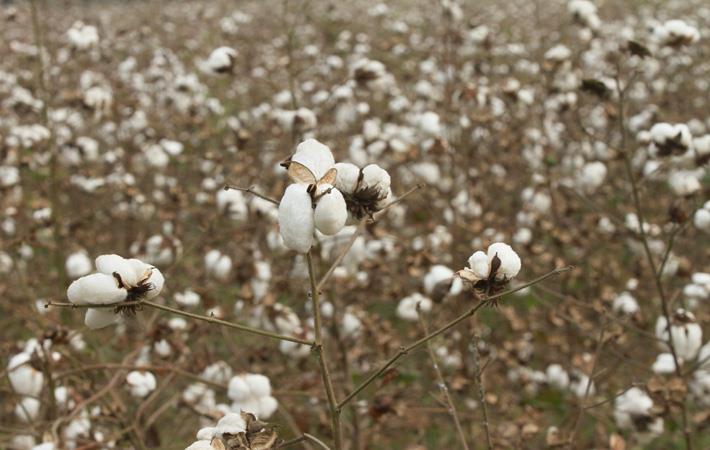Interviews
Indian cotton spinning sector recovers from slowdown: ICRA
27 Dec '19
4 min read

Pic: Shutterstock
Indian spinners expect that the overall performance for fiscal 2019-20 will be weighed down by the tepid volumes and weak earnings seen in the first half of the fiscal. This is the likely scenario even though the industry is gradually recovering from the slowdown, according to a recent ICRA survey on the domestic cotton spinning industry.
According to Jayanta Roy, senior vice president and group head, corporate sector ratings, ICRA, the Indian cotton spinning industry’s performance has been severely constrained in the current fiscal, being adversely impacted by the demand slowdown, unfavourable raw material prices and rising funding requirements.
“While export volumes have seen some uptick in recent months, as against the sharp de-growth witnessed between May-September 2019, they remain lower than the levels seen in the preceding fiscal,” an ICRA press release quoted Roy as saying.
The survey participants expect revenues to fall by more than 5 per cent and operating profitability to contract by around 3 per cent for the fiscal.
The other findings include the likelihood of cotton prices to remain below the minimum support price level till March 2020 on expectations of a bumper crop production in cotton year 2020 (India’s cotton year starts in October and ends in September; yarn prices and contribution levels continuing to tread lower than the 2018-19 levels even though yarn prices have started moving up; increase in working capital debt levels by ~15 per cent year on year, reflecting the inventory build-up amid shortfall in earnings; and limited capacity additions envisaged over the next 12 months.
In line with the survey findings, ICRA expects spinners to register a revenue de-growth of around 6 per cent, with both volumes and realisations having come under pressure in H1 FY2020. Key reasons for the same were weak export demand amid increasing competition from other producing countries and sluggishness in domestic consumption levels.
Higher domestic raw material costs, with Indian cotton prices trading at a premium to international cotton also contributed to the loss of export competitiveness. Buoyed by the improvement in exports witnessed since October 2019, the survey indicates that the industry pins its hopes on a continued gradual recovery in cotton yarn exports over the coming quarters, aided by the softening of domestic cotton prices.
While most industry participants expect operating profitability to contract by around 300 bps in the current fiscal, some respondents anticipate higher correction reflective of the difficult times being faced by the sector.
The fall so far has been steeper for companies which had stocked and carried over higher-cost cotton (at around ₹130/Kg) into the current fiscal. While the domestic cotton prices have reduced from July 2019, the decline in yarn prices has been sharper, resulting in contribution levels adjusted for cotton stock held falling to around ₹75/Kg in Q2 FY2020.
Even though yarn realisations have improved in recent weeks, the respondents do not expect any major uptick in yarn prices, given the low cotton prices witnessed as the industry expects the crop output in the current season to be healthy at more than 375 lakh bales.
Cotton and yarn prices are likely to remain range-bound at around ₹110-115/Kg and ₹195-205/Kg respectively in H2 FY2020. As a result, the spinners expect average contribution levels for the fiscal to be at ₹80/Kg (with contribution likely to improve to around ₹82-85/Kg in H2 FY2020 as against FY2019 levels of ₹95/Kg).
The survey findings also highlight that the working-capital debt levels of spinners have increased, because of a pile-up in yarn stocks and some elongation in the receivables cycle owing to the tepid demand conditions.
Respondents expect average utilisation of fund-based limits to be at around 90% in FY2020, higher from the 75 per cent levels seen in the last fiscal. On the back of these adverse developments, coupled with average capacity utilisation levels in the industry falling by around 500 bps to 82 per cent in H1 FY2020, a vast majority of the respondents have indicated that no capacity expansion is being planned over the next 12 months.
The credit profile of spinners has weakened in the recent quarters, with earnings from operations and liquidity position facing pressures in H1 FY2020 amid rising debt levels. The scenario is similar to FY2012, when cotton prices fell sharply, resulting in high inventory losses and tight cash flows for spinners. The impact on debt-coverage metrics and liquidity is expected to be more adverse for leveraged companies that have undertaken a sizeable debt-funded capital expansion in recent years and have higher repayments scheduled.
According to Jayanta Roy, senior vice president and group head, corporate sector ratings, ICRA, the Indian cotton spinning industry’s performance has been severely constrained in the current fiscal, being adversely impacted by the demand slowdown, unfavourable raw material prices and rising funding requirements.
“While export volumes have seen some uptick in recent months, as against the sharp de-growth witnessed between May-September 2019, they remain lower than the levels seen in the preceding fiscal,” an ICRA press release quoted Roy as saying.
The survey participants expect revenues to fall by more than 5 per cent and operating profitability to contract by around 3 per cent for the fiscal.
The other findings include the likelihood of cotton prices to remain below the minimum support price level till March 2020 on expectations of a bumper crop production in cotton year 2020 (India’s cotton year starts in October and ends in September; yarn prices and contribution levels continuing to tread lower than the 2018-19 levels even though yarn prices have started moving up; increase in working capital debt levels by ~15 per cent year on year, reflecting the inventory build-up amid shortfall in earnings; and limited capacity additions envisaged over the next 12 months.
In line with the survey findings, ICRA expects spinners to register a revenue de-growth of around 6 per cent, with both volumes and realisations having come under pressure in H1 FY2020. Key reasons for the same were weak export demand amid increasing competition from other producing countries and sluggishness in domestic consumption levels.
Higher domestic raw material costs, with Indian cotton prices trading at a premium to international cotton also contributed to the loss of export competitiveness. Buoyed by the improvement in exports witnessed since October 2019, the survey indicates that the industry pins its hopes on a continued gradual recovery in cotton yarn exports over the coming quarters, aided by the softening of domestic cotton prices.
While most industry participants expect operating profitability to contract by around 300 bps in the current fiscal, some respondents anticipate higher correction reflective of the difficult times being faced by the sector.
The fall so far has been steeper for companies which had stocked and carried over higher-cost cotton (at around ₹130/Kg) into the current fiscal. While the domestic cotton prices have reduced from July 2019, the decline in yarn prices has been sharper, resulting in contribution levels adjusted for cotton stock held falling to around ₹75/Kg in Q2 FY2020.
Even though yarn realisations have improved in recent weeks, the respondents do not expect any major uptick in yarn prices, given the low cotton prices witnessed as the industry expects the crop output in the current season to be healthy at more than 375 lakh bales.
Cotton and yarn prices are likely to remain range-bound at around ₹110-115/Kg and ₹195-205/Kg respectively in H2 FY2020. As a result, the spinners expect average contribution levels for the fiscal to be at ₹80/Kg (with contribution likely to improve to around ₹82-85/Kg in H2 FY2020 as against FY2019 levels of ₹95/Kg).
The survey findings also highlight that the working-capital debt levels of spinners have increased, because of a pile-up in yarn stocks and some elongation in the receivables cycle owing to the tepid demand conditions.
Respondents expect average utilisation of fund-based limits to be at around 90% in FY2020, higher from the 75 per cent levels seen in the last fiscal. On the back of these adverse developments, coupled with average capacity utilisation levels in the industry falling by around 500 bps to 82 per cent in H1 FY2020, a vast majority of the respondents have indicated that no capacity expansion is being planned over the next 12 months.
The credit profile of spinners has weakened in the recent quarters, with earnings from operations and liquidity position facing pressures in H1 FY2020 amid rising debt levels. The scenario is similar to FY2012, when cotton prices fell sharply, resulting in high inventory losses and tight cash flows for spinners. The impact on debt-coverage metrics and liquidity is expected to be more adverse for leveraged companies that have undertaken a sizeable debt-funded capital expansion in recent years and have higher repayments scheduled.
Fibre2Fashion News Desk (DS)
Popular News
Leave your Comments
Editor’s Pick
































-Ltd..jpg?tr=w-120,h-60,c-at_max,cm-pad_resize,bg-ffffff)





.jpg?tr=w-120,h-60,c-at_max,cm-pad_resize,bg-ffffff)
.jpg?tr=w-120,h-60,c-at_max,cm-pad_resize,bg-ffffff)






